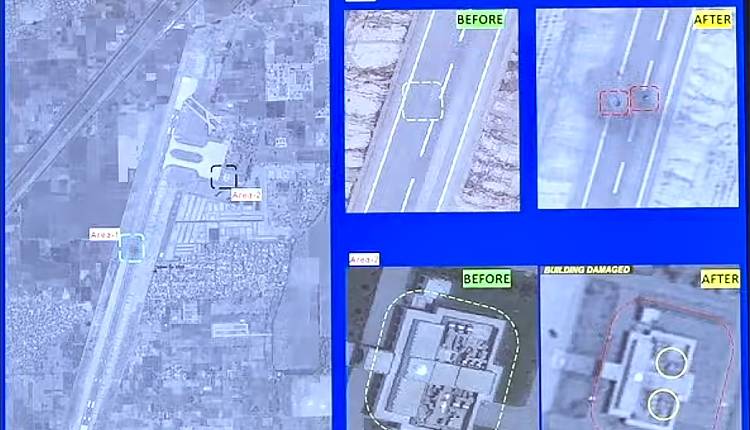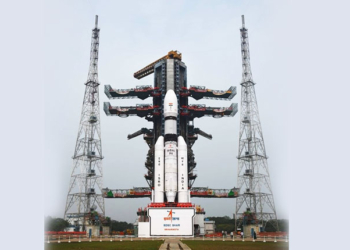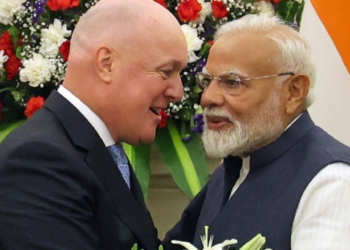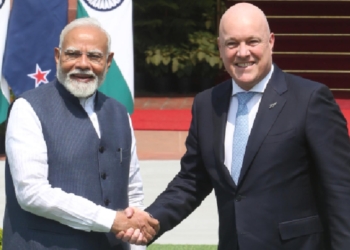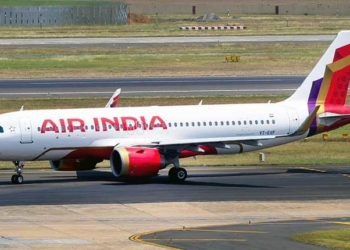New Delhi: India launched a decisive counter-strike against terrorist camps along the Line of Control in Pakistan under Operation Sindoor, eliminating fifteen key sites linked to extremist groups, atellite imagery, analysed by OSINT (Open Source Intelligence expert) expert Damien Symon, provided compelling evidence of the destruction at key Pakistani airbases.
Among the high-profile targets was ‘Markaz Subhan Allah’ in Bahawalpur, the primary hub for Jaish-e-Muhammed (JeM), where many of its leaders and fighters were trained.
Similarly, ‘Markaz Taiba’ in Muridke, near Lahore, served as the headquarters for Lashkar-e-Taiba (LeT), infamous for orchestrating the 2008 Mumbai attacks.
Another critical hit was ‘Mehmoona Joya’ in Sialkot, a stronghold of Hizbul Mujahideen (HM), known for infiltrating militants into Jammu and Kashmir.
Several other locations, including ‘Sawahi Nallah Camp’, ‘Markaz Syedna Bilal’, ‘Markaz Abbas Kotli’, and ‘Markaz Ahle Hadith’, were also targeted.
The strikes were carried out in response to a series of cross-border drone incursions and targeted attacks.
India’s precision airstrikes inflicted severe damage on multiple Pakistani military installations, triggering intense hostilities along the LoC, where both sides exchanged heavy-calibre fire.
Over three days of escalating military action, Indian fighter jets conducted precision strikes on nine terror hubs inside Pakistan and Pakistan-occupied Kashmir (POK).
The operation was a direct response to the devastating terrorist attack in Pahalgam on 22 April, which claimed 26 civilian lives – all were tourists.
LANDSAT images from 10 May revealed multiple impact zones at Sargodha Airbase, including significant damage to runway 14/32.
Meanwhile, Rahim Yar Khan Airbase was rendered non-operational, with a NOTAM issued until 17 May. Strikes on Nur Khan, Bholari, and Jacobabad Airbases further crippled Pakistan’s military infrastructure, targeting hangars, operational zones, and radar sites.
On 10 May, after sustained Indian strikes and retaliatory Pakistani drone, missile, and artillery attacks, Pakistan’s Director General of Military Operations (DGMO) urgently contacted his Indian counterpart at 3:30 pm, requesting a ceasefire. India agreed but only after delivering a calculated military response.
Twenty hours after the ‘understanding’ between India and Pakistan, a panel of senior defence officials said that India eliminated “100 terrorists across nine locations”, including “three high-profile operatives linked to the Kandahar hijacking and Pulwama attack.”
The panel also clarified that there was no intrusion or airspace violation by the Pakistan army across international borders.
At a press briefing to shed light on the military engagements and counter-terror efforts, the panel comprising Lieutenant General Rajiv Ghai, Vice Admiral AN Pramod, and Air Marshal Awadhesh Kumar Bharti offered critical updates on Operation Sindoor.
Operation Sindoor struck Pakistan’s key military assets, including command and airbase structures in Chaklala, Rafiki, and Rahriyar Khan.
Officials underscored India’s firm stance that aggression would not go unanswered, and any escalation would meet proportionate retaliation.
“The response will be fair and punitive,” Lieutenant Gen Ghai had said.
Radar installations at Pasrur and Sialkot were neutralised, and key military targets in Rawalpindi, Rahim Yar Khan, Sukkur, and Sunia were struck using air-launched precision munitions.
Adding to the conflict, Symon exposed Pakistan’s misinformation campaign, revealing doctored images falsely depicting damage to Indian military bases, including an outdated photo of Jammu Airport circulated as recent destruction.
(IANS)




